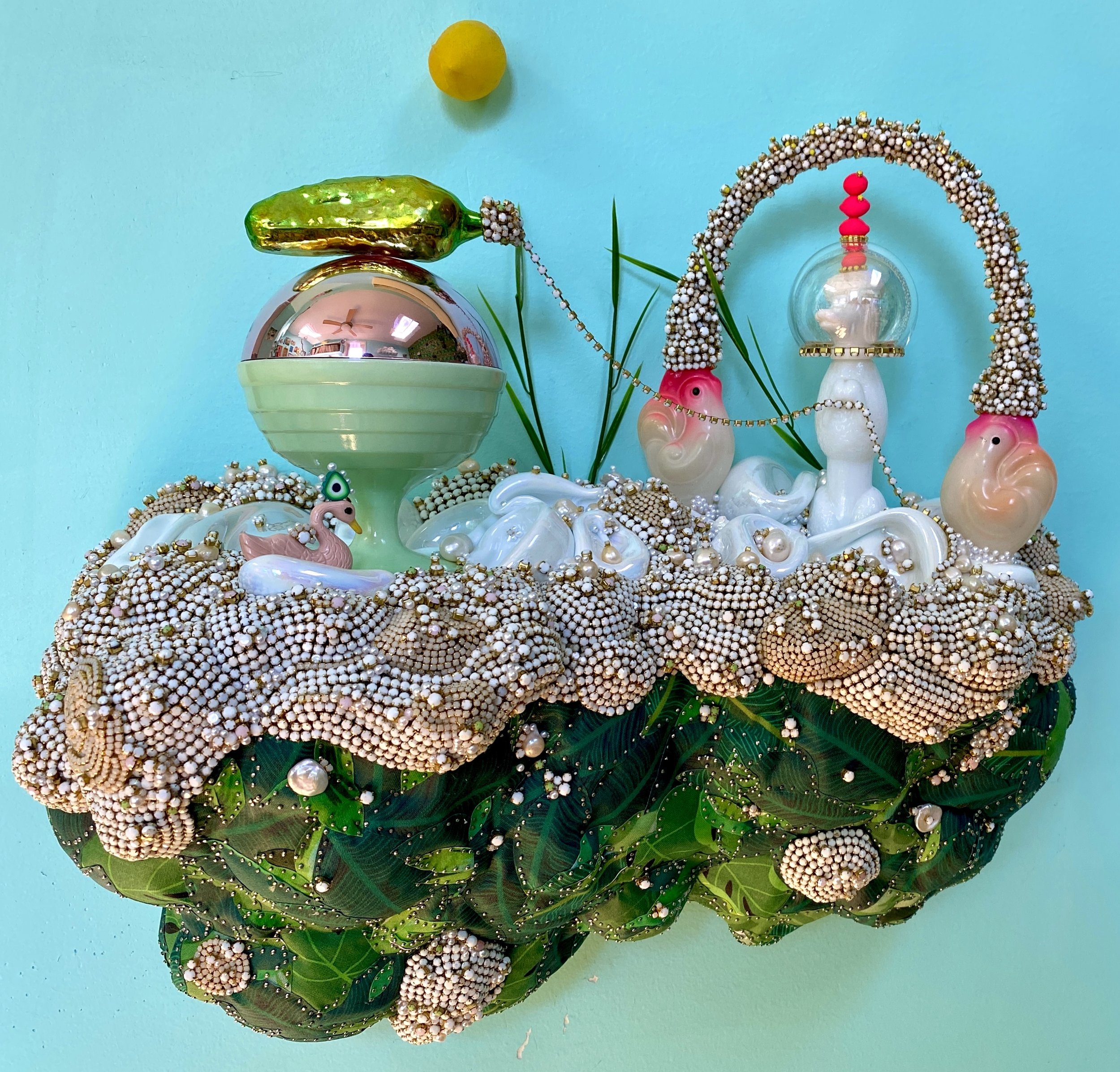













Your Custom Text Here
These "Strange Creatures" are characters who inhabit a forest which serves as a sanctuary for them. All are welcome in this safe zone as they are able to find refuge from societal constraints and can live without fear of judgement as beautiful mutants.
These sculptures are part of a body of work that I began in 2017 when the political climate changed drastically in The United States and I saw many similarities to that of the post- war-era. The work explores the culture of the mid-century and investigates themes of conformity, othering, mass culture, and mass fear. As the government recklessly preyed on people’s hatred of outsiders and their fear of losing their freedoms, it created a society injected with panic.
I think that the relatability of pop-culture imagery may have instilled a sense of safety and order. I have focused on the phenomenon of kitsch mass-produced products as cultural artifacts and view them as a lens into the cultural landscape. The imagery depicted a sugar-coated idealized version of reality, serving as a distraction from the unvarnished underlying social and political unrest. This dichotomy between the glossy surface of consumer culture and the turbulent realities of society speak to American’s unattainable aspirations at the time. I wanted to alter the objects to change the context of the subjects of these cultural by-products and give them new meaning.
These "Strange Creatures" are characters who inhabit a forest which serves as a sanctuary for them. All are welcome in this safe zone as they are able to find refuge from societal constraints and can live without fear of judgement as beautiful mutants.
These sculptures are part of a body of work that I began in 2017 when the political climate changed drastically in The United States and I saw many similarities to that of the post- war-era. The work explores the culture of the mid-century and investigates themes of conformity, othering, mass culture, and mass fear. As the government recklessly preyed on people’s hatred of outsiders and their fear of losing their freedoms, it created a society injected with panic.
I think that the relatability of pop-culture imagery may have instilled a sense of safety and order. I have focused on the phenomenon of kitsch mass-produced products as cultural artifacts and view them as a lens into the cultural landscape. The imagery depicted a sugar-coated idealized version of reality, serving as a distraction from the unvarnished underlying social and political unrest. This dichotomy between the glossy surface of consumer culture and the turbulent realities of society speak to American’s unattainable aspirations at the time. I wanted to alter the objects to change the context of the subjects of these cultural by-products and give them new meaning.